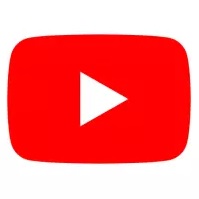 |
|
||||||||||||
|
Institute of Philology of
the Siberian Branch of Russian Academy of Sciences |
|
||||||||||||
|
|||||||||||||
| Sibirskii Filologicheskii Zhurnal (Siberian Journal of Philology) | |
|
Article
Authors: Olga E. Gevel Siberian Federal University, Krasnoyarsk, Russian Federation In the section Study of literature
Abstract: The paper focuses on the image of rubashka (a shirt) recurring in different contexts in the creative and epistolary works of Leo Tolstoy including his letters, diaries, and notes. The author addresses the methodologies utilized in current research concerning the poetics of the wardrobe of literary characters. The analysis corroborates the significance of the image, thereby underscoring the emphasis on these descriptive elements through the entire corpus. This study investigates the multiple roles and cultural settings of the rubashka image throughout history, with future research planned to provide further detailed analysis. The image in question proves to serve a dual purpose: as a character portrait and as a symbolic plot device, indicating significant transitions in social status (advancement, financial shifts, marriage) or biological status (birth, illness, or death. Also noted is the relationship between the imagery of rubashka and kaftan in the context of Tolstoy’s philosophy of “non-resistance to evil by violence” (a concept rooted in biblical teachings and frequently appearing in his literary and personal writings). It is of significance that rubashka becomes central to the visual representation of the writer. Many portraits, photographs, and videos feature Leo Tolstoy in his well-known tolstovka, a simple shirt that came to symbolize his philosophical perspective. The material of artistic works, including the novels “War and Peace” and “Anna Karenina,” confirms the conceptualization of using a shirt as a symbolic act by Leo Tolstoy, as demonstrated by his auto-biographical images and their projections. Keywords: Leo Tolstoy, “War and peace”, “Anna Karenina”, image of a shirt, caftan, wardrobe of a literary character, portrait characteristic of a character Bibliography: Абиева Н. М. Поэтика костюма в прозе А. П. Чехова: Монография. Барнаул: АлтГПУ, 2018. 230 с. Анисимов К. В. «В разорванной кибитке, посреди кур и добрых башкирцев». Л. Н. Толстой инвертирует европейский ориентализм (творчество и жизнетворчество в башкирской степи) // Имагология и компаративистика. 2017. № 7. С. 142–165. Булгаков В. История Дома Льва Толстого в Москве. // Л. Н. Толстой: К 120-летию со дня рождения. (1828–1948) / Коммент. и ред. Н. Н. Гусева. М.: Гос. лит. музей, 1948. Т. 2. С. 523–601. (Летописи Государственного литературного музея; Кн. 12) Дудукалова М. В., Сысоева О. А. Атрибуты гардероба главной героини в романе Л. Н. Толстого «Анна Каренина» // Новый филологический вестник. 2019. № 1. URL: https://cyberleninka.ru/article/n/atributy-garderoba-glavnoy-geroini-v-romane-l-n-tolstogo-anna-karenina (дата обращения 10.01.2023). Кирсанова Р. М. Костюм в русской художественной литературе XVIII – первой половины XX в. М.: Большая Российская энциклопедия, 1995. 383 с. Кирсанова Р. М. Розовая ксандрейка и драдедамовый платок. Костюм – вещь и образ в русской литературе XIX века. 2-е изд. М.; СПб.: Родина, 2006. 175 с. Козубовская Г. П. Костюм в прозе И. С. Тургенева: роман «Дым» // Мир науки, культуры, образования: экология, культурология, филология, искусствоведение, педагогика, психология. Международный научный журнал. 2013. № 5 (42). С. 281–284. Лазареску О. Г. Предметный мотив одежды в русской литературе и фольклоре // Преподаватель. XXI век. 2013. № 3, ч. 2. С. 356–368. Манкевич И. А. «Литературные одежды» как текст: мотив, сюжет, функция // Сюжетология и сюжетография. 2013. № 2. С. 12–17. Маслова Г. С. Народная одежда в восточнославянских традиционных обычаях и обрядах XIX – начала XX в. М.: Наука, 1984. 216 с. Попова Ю. С. Мотивная функция костюма в рассказе И. Бунина «Чистый понедельник // Актуальные вопросы современной филологии и журналистики. Лингвистика и межкультурная коммуникация. 2016. № 1 (20). С. 86–89. Терехова М. В. Костюм как текст и язык культуры // Вестник С.-Петерб. ун-та культуры и искусства. 2016. № 2 (27). С. 62–64. Greenleaf М. Pushkin and Romantic Fashion: Fragment, Elegy, Orient, Irony. Stanford: Stanford Uni. Press, 1994. 412 p. |
 |
Institute of Philology Nikolaeva st., 8, Novosibirsk, 630090, Russian Federation +7-383-330-15-18, ifl@philology.nsc.ru |
© Institute of Philology |


